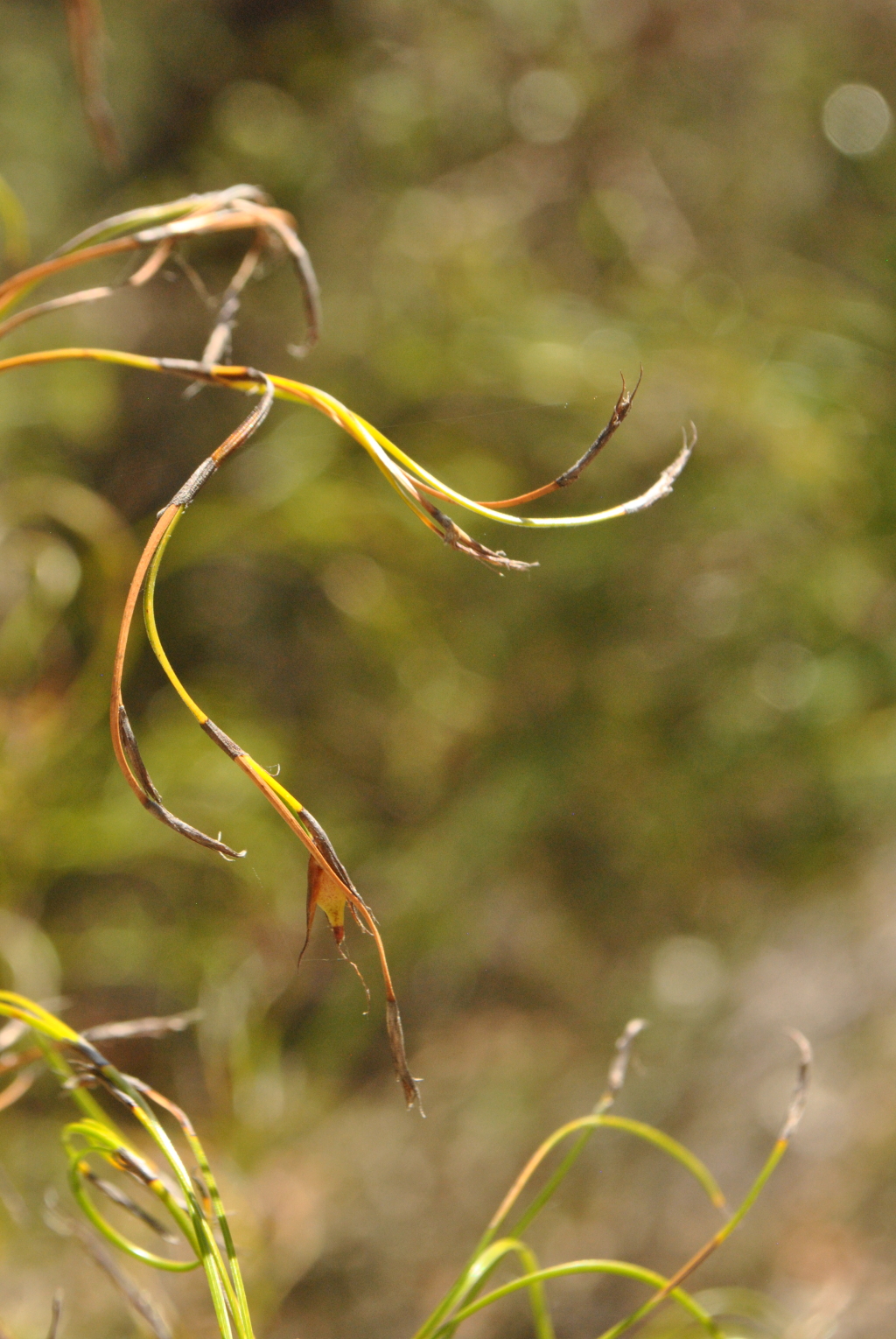Caustis flexuosa
R.Br. Curly WigPerennial with short rhizome. Culms scabrous to smooth, 15–90 cm high, 1.5–2.5 mm diam. Leaf sheaths dark red-brown to dark grey-brown. Inflorescence with 7–14 distant clusters of branches, 20–80 cm long, ultimate branches strongly curled or flexuose. Spikelets (1–)2-flowered, 6–10 mm long, often ± falcate; glumes 4–5(–7), long-acute, mostly mucronate, dark red-brown, glabrous or sparsely puberulous, margins hyaline and glabrous, 6–10 mm long; stamens 3 or 4; anthers 3.7–4.5 mm long, excluding apical appendage 0.3–0.5 mm long; style 3-fid; persistent style-base 1.5–3 mm long, dark purplish-red. Nut narrow-ellipsoid to ellipsoid, whitish to straw-coloured, coarsely and irregularly reticulate, minutely dotted, 3.5–5 mm long, 1.8–2.5 mm diam. Flowers spring–summer.
LoM, Wim, GleP, VVP, GipP, OtP, WaP, CVU, GGr, DunT, EGL, EGU, HSF, OtR, VAlp. Also Qld, NSW. In dry sclerophyll forests or heathy woodland, on sandy or gravelly soils derived from sandstone or granite. Mostly near the coast, but with isolated inland occurrences in the Grampians, Lerderderg Gorge, and the Tynong-Tonimbuk area.
In the western part of the species' range, plants have less curly branches and generally fewer branches per node, with very few sterile branches. Such plants have been named Caustis restiacea and, although possibly worth recognizing as a subspecies, in the absence of other distinguishing features, they are here included in C. flexuosa.
Wilson, K.L. (1994). Cyperaceae. In: Walsh, N.G.; Entwisle, T.J., Flora of Victoria Vol. 2, Ferns and Allied Plants, Conifers and Monocotyledons, pp. 238–356. Inkata Press, Melbourne.
 Spinning
Spinning
